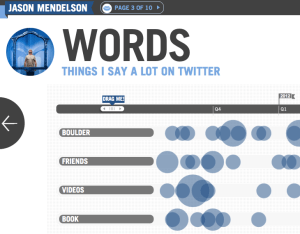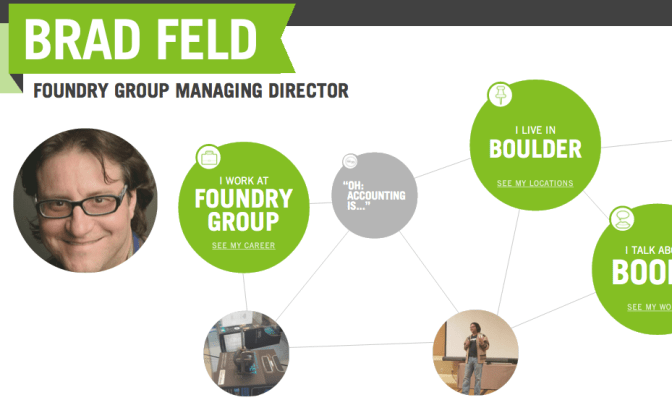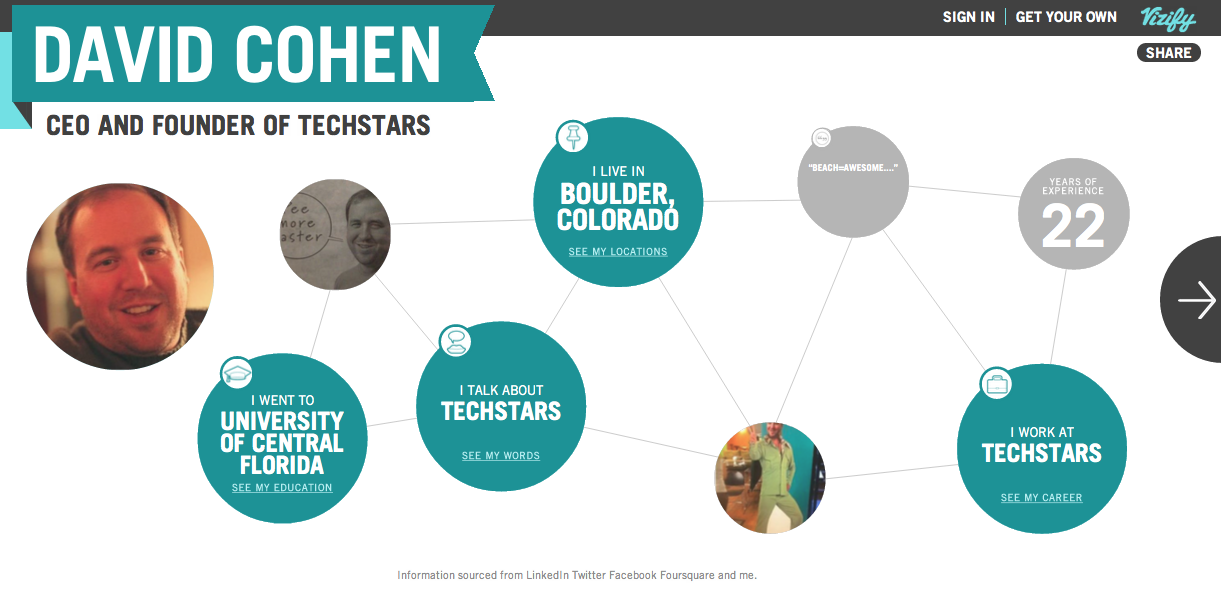Today, our personal data is scattered across a growing number of apps, social networks, and online services, making it tough to forge any kind of coherent online identity or personal brand. The Portland-based Vizify emerged out of TechStars last year with a simple goal: Help people make a good first impression online by transforming that fragmented data into a unified, visual profile.
In January, Vizify landed its first round of funding from investors like Tim Draper and Feedburner co-founder Matt Shobe, using the investment to begin “recasting how we build and manage our identities online,” says Vizify CEO Todd Silverstein. And today, Vizify is pulling back the curtain on the final product, officially launching a slick new way to present your personal brand.
The new Vizify automatically sucks in data from your social networks to create that unified dossier, meaning that users simply create a profile (which only takes a few minutes) and connect their networks of choice, like Foursquare, LinkedIn, Facebook and Twitter. Boom! Vizify transforms that data into visuals as you continue connect your networks.
 As you can see from the images above and below, the value proposition is the same as what’s behind single sign-on. Users get to have their social networking data piped into a central hub that refreshes itself to stay up to date. Instead of forcing people to slog through your twitter stream to see what you happen to be retweeting, one of Vizify’s pages in your visual resume is a dedicated, interactive graph of the words you tweet the most. It’s a great, quick way for visitors to get a sense for what subjects you’re passionate about.
As you can see from the images above and below, the value proposition is the same as what’s behind single sign-on. Users get to have their social networking data piped into a central hub that refreshes itself to stay up to date. Instead of forcing people to slog through your twitter stream to see what you happen to be retweeting, one of Vizify’s pages in your visual resume is a dedicated, interactive graph of the words you tweet the most. It’s a great, quick way for visitors to get a sense for what subjects you’re passionate about.
The same goes for LinkedIn and Facebook, instead of seeing your eResume on LinkedIn, visitors will see a nifty visual representation of your career and educational information, like where you got your GED from. The same goes for Foursquare.
Obviously, Vizify isn’t alone here. The barrier to entry isn’t as high as it might be in other spaces, and you might see Vizify as the next logical step in a visualization progression for something like About.me. Facebook Timeline, too, offers a similar approach. Vizify may not unconditionally blow your socks off, but the design is clean, straightforward, and data integration is quick.
The more data you have in the apps, the more you’re going to get out of a service like Vizify, and the more meaning it will have to your visitors. From here, Vizify needs to make it easy to share and embed your visual resume on any site and export that data. It’s also all about SEO, so that if you spend the time connecting your profiles, when someone searches your name, your Vizify profile is one of the first to pop up. Then we’d be cooking with oil.
Currently, users can set a Vizify vanity URL via the accounts menu, and the team spent a bunch of time optimizing content on the pages against users’ names to make it search-friendly to crawl, says CEO Todd Silverstein. Next up? Giving users the ability to use their own domain instead of Vizify.

